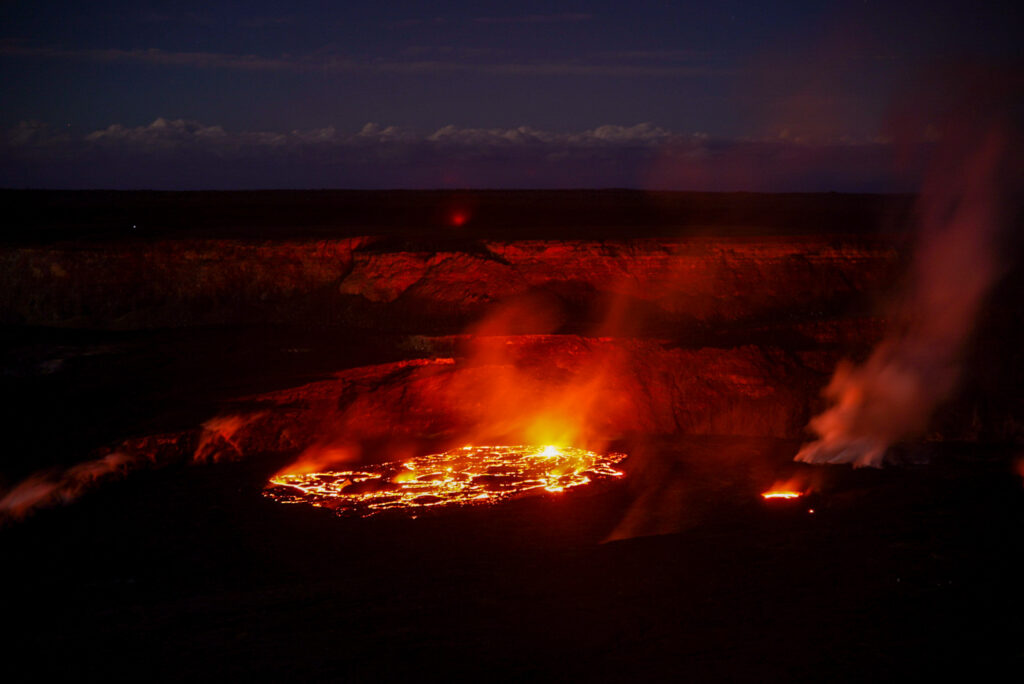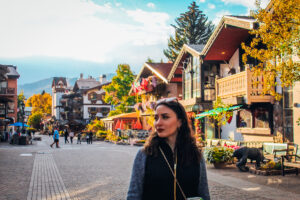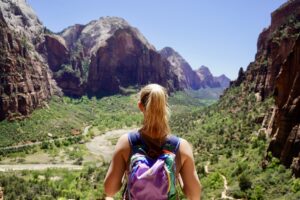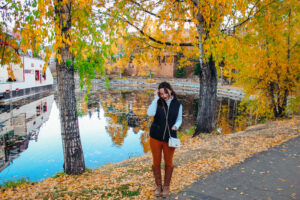One of the top attractions of the Big Island of Hawaii is Hawaii Volcanoes National Park. This national park is home to some of the most unique geological landscapes, covers 335,259 acres, and spans approximately 13,680 ft in elevation. Here you will find the summits of two of the world’s most active volcanoes, Kīlauea and Mauna Loa, and if you’re lucky you may have the incredible experience of viewing a live volcano. On my recent visit to the Big Island, we wanted to fit in as many experiences as possible (see my previous post here) and therefore only had one day to spend at the national park. Here is how we made the most of that one day.
The Visitor Center
My first stop at any national park is always the visitor center to chat with the rangers and volunteers. The folks working at the Kīlauea Visitor Center are very knowledgeable and were happy to share information and help us determine the best way to spend our day. At this park in particular, the rangers can give you important tips on where the volcano is most active and therefore where the best views are! While you’re here, grab a trail map, look around at the souvenirs, and consider grabbing a postcard to send to family or friends! There were a lot of great professionally shot photos of the active lava. Depending on your level of confidence as a photographer you might consider purchasing a print or even just a postcard to commemorate your visit.


Holei Sea Arch
Following the recommendation of a park ranger, we started our visit with a scenic drive down Chain of Craters Road to the final destination, the Holei Sea Arch, an approximately 3700 ft drop in elevation. Once you reach the end of the road, there is a short walk out to the ocean. Here you are confronted by steep cliffs and black lava rock, which is covered in Holei, a small endemic plant in the milkweed family. Looking out along the coast line, you will find a beautiful view of a 90 ft arch formed where the lava meets the sea. This was not at all the view I was anticipating when we started our day! This beautiful but temporary attraction has a limited life span, as it will eventually erode away completely. It is a great reminder of the power of water, lava, and time, and the finite nature of all things.
Chain of Craters Road
On the way back up the Chain of Craters Road, there are multiple scenic stops to check out. Depending on the time of day you are visiting, you can stop and check as many out as possible. Consider stopping at the Pu’uloa Petroglyphs, considered a sacred site with historical petroglyphs carved into hardened lava. There are also several great overlooks, such as Kealakoma Overlook which gives beautiful views of a lava field, and the Pauahi Crater which has hosted at least 3 known volcanic eruptions. There are several short hiking trails along the road, which we unfortunately did not have time to explore. If interested, you can find more information here.
Thurston Lava Tube
The Thurston Lava Tube, also known as Nāhuku, is a can’t miss stop. Following a short well paved trail through the rainforest, you will come to steps leading down into a tunnel. The lava tube was formed approximately 500 years ago by flowing lava. It was incredible to walk through this large tunnel and imagine 2000’F lava flowing through and creating the pathway! We visited the lava tube at the tail end of our afternoon before dinner as the sun was beginning to set. This meant less people in the tube with us and that the tube was lit up by experience enhancing orange-red light which added to the experience.
Dinner
As the sun is setting, you’ll have some time to kill as the best lava viewing won’t start until around 9 PM. There are a few options of places to eat in and around the park. The park itself has a restaurant called the Volcano House, which is known for its views of the volcanic crater. However, we chose to drive a few minutes out of the park to the Thai Thai Bistro and Bar. This was a cute, casual spot with good tasting and filling food after a day in the national park. We even brought in a deck of cards to play a few games and pass the time while waiting for darkness. I got the house special, the Thai Thai Special Curry, which was incredible!
Volcano Viewing
Finally, the main attraction of Volcanoes National Park – viewing an active volcano! As a general rule, the best time to view the lava is after 9 PM, but as you would expect this varies with the seasons and phases of the moons. A ranger we met did advise that the actual ideal time to view the volcano would be at 2 or 3 AM, however I couldn’t convince my friends that returning in the middle of the night was a good idea. During my visit in January 2023, we were able to view the active Kīlauea Lava Lake in the Halema’uma’u Crater.

The first place we went was the Kīlauea Overlook, located very close to the visitor center. This is a great spot to view the entire lava lake from above. There is a parking lot and a short trail out to the view point.
The ranger also recommended a slightly closer view from Cinder Trail. In order to get here, we parked at the Destination Trail Parking Lot, then walked down the Old Crater Rim Drive (closed to motor vehicles) until we reached the Cinder Trail. It was approximately 1 mile in and out. Although it was dark, the trails were well marked and there was a good amount of foot traffic. Here we were able to get more up close and personal with the lava; you could even hear the pops and hisses as the lava pooled to the surface if you listened closely!



When planning your visit, check out the national park’s website for information on the status of the volcano as it is not always actively flowing, and as previously stated be sure to check in with the rangers as they will have the most up to date information on the best safe viewing spots!
Pro tip: If you are interested in taking your own pictures, consider bringing a tripod. Longer shutter speeds will allow more of the light from the lava to enter your lens and you can get some great shots to send home. As with any increase in your shutter speed there is an increase in movement causing blurry and unclear photos, hence the tripod. You can also experiment with increasing your ISO and widening your aperture, see what works best for you. If you are using a cell phone, the Apple iPhone night mode worked well for my friends!
I hope this helps you plan your trip to Hawaii Volcanoes National Park! Remember to respect the land, pack in and pack out, and have fun exploring this incredible world!

Other Top Posts!

24-Hour Off-Season Itinerary for Vail, Colorado
Vail may be known for it’s slopes, but there is still plenty to do in the town’s budget-friendly off-season!

Ultimate 3 Day Zion National Park Itinerary
Zion National Park is a stunning and diverse landscape located in southwestern Utah. Read and discover how best to plan your ultimate 3 day itinerary in this magnificent place!

24-Hour Off-Season Itinerary for Independence Pass and Aspen, Colorado
From crossing the infamous Independence Pass to hiking at the Maroon Bells, plan your perfect day trip to Aspen, Colorado!

A 24-Hour Autumn Escape to Cooperstown, NY
From a fall foliage train to a family-friendly brewery, this Cooperstown itinerary will give you all of the autumn feels!

Exploring Denver and the Surrounding Areas
Hitch along with my college friend and local Coloradan as we explore Denver and the surrounding area with quick stops and day trips alike!

24-Hour Off-Season Itinerary for Breckenridge, Colorado
From a ski lodge-themed cafe and mining exhibits, to a giant troll in the woods and alpine lakes, there’s a lot to do in Breckenridge all year!